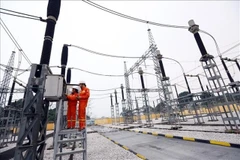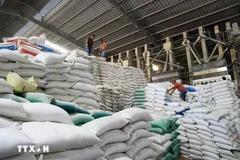Hanoi (VNA) - Economists have raised Vietnam’s economic growth forecast after the latest data show that the country’s economic growth topped 7 percent in the recent third quarter.
By now, many international financial organizations have issued very positive assessments on Vietnam’s economic prospects for the time to come. Economists have raised Vietnam’s economic growth forecast after the latest data show that the country’s economic growth topped 7 percent in the recent third quarter.
In the afternoon of December 17, In Hanoi, the World Bank announced a report raising its forecast on Vietnam’s GDP, from 6.8 percent to 6.9 percent for 2019 and from 6.7 percent to 6.8 percent for 2020, and lowering the country’s public debts b 8 percentage point compared to 2016, adding that Vietnam’s trade surplus will rise constantly over the past four years. These are very impressive in the context that the global economy is coming to as standstill.
The report reviews and updated the World Bank’s semi-annual economic situation, affirming the resilience of Vietnam’s economy. The GDP growth is maintained thanks to the strong external economic sector, with export expected to rise by 8 percent in 2019, four times the average in the world.
Vietnam remains an attractive destination for foreign investors, with an average monthly pledged foreign direct investment nearing 3 billion USD. Besides, individual consumption by households is becoming a more and more important factor contributing to the GDP growth as the middle class is growing and the salary is rising. Investment by firms in the private sector also rose 17 percent over the same period.
Ousmane Dione, country director of the World Bank in Vietnam, held that the dealing with limitations in financial mobilization for enterprises needs the top attention from policy makers if Vietnam wishes to continue the orbit of rapid and inclusive growth towards becoming a nation of high income in the coming decades.
Vietnam’s immediate and mid-term prospects are positive. The World Bank forecast that the GDP will growth around 6.5 percent in the coming years. The fundamental factors of Vietnam’s economy are still firm, while the Government has created a certain fiscal year room through its cautious fiscal year policies.
Those assessments are tabled on the basis of the economy’s bright points in the first 11 months of 2019, including the continued growth of the processing and manufacturing industries, increasing export revenue and attraction of foreign investment, high growth in consumer goods and services retail sales, a hustling market with stable development, and record increase in the foreign tourist arrivals, etc.
In the time under review, the total retail sales of goods and services reached 4,481 trillion VND, 11.8 percent higher than the same period a year earlier. In November alone, the increase was 12.6 percent, the highest in the month of the past six years.
Export revenue in the 11 months amounted to 241.4 billion USD, an increase of 7.8 percent. As many as 30 products gain an export revenue of over 1 billion USD each, occupying up to 91.6 percent of the total export revenue, five of which gaining an export revenue of over 10 billion USD each.
However, Vietnam is not totally immunized against external shocks, evidenced by the fact that export growth has decreased from 21 percent down to 8 percent in the 2017-2019 period. FDI to production and business established also increases slowing, at 30 percent over the past two years.
On the basis of the above-mentioned external risks and in order to bring about additional growth driving force for the economy, the report proposed that priority should be given to the firm and dynamic private sector, and that well operating capital markets should be developed to serve as the foundation for Vietnam’s prosperity in the time to come.
It also pointed out five sectors that policy makers in Vietnam need to pay attention to so as to boost the development of the capital markets, including modernizing legal provisions on the capital markets; improving the governance and publicizing information; broadening the investors’ network; developing innovative products; and intensifying the role of the government in developing long-term financial resources./.





























